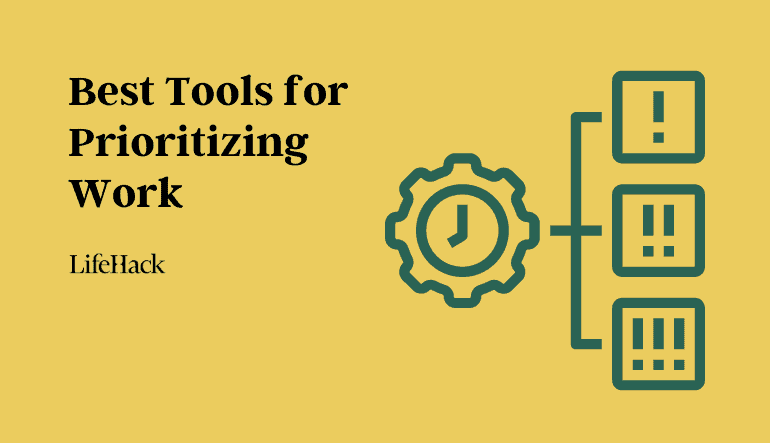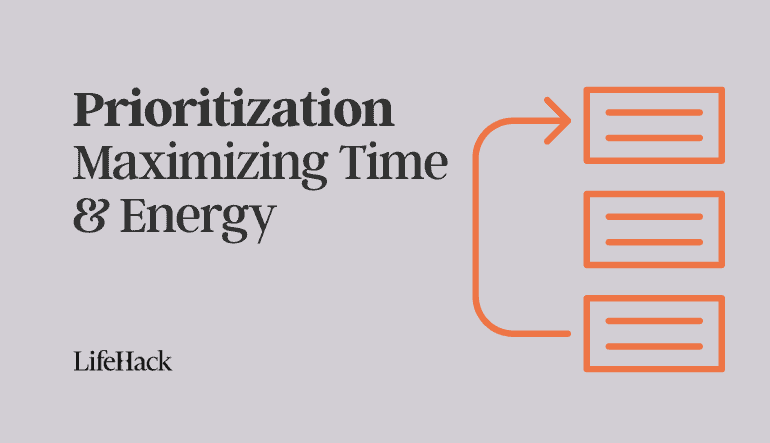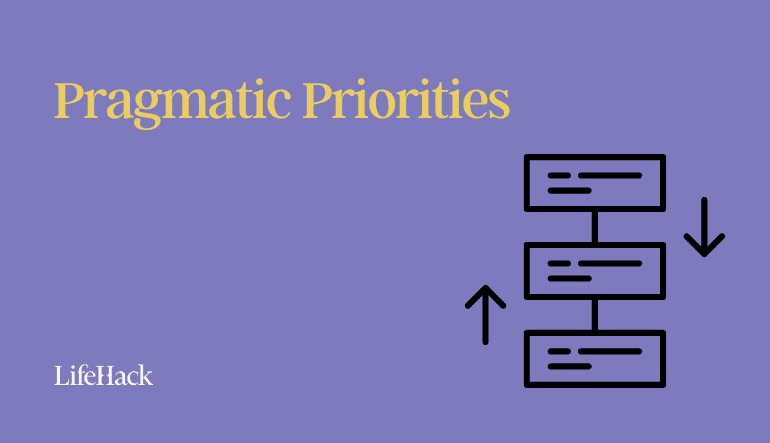Performance goals are a staple of professional life. At the start of each quarter or year, many of us dutifully set objectives—“increase sales by 15%” or “learn Python,” perhaps—often because our manager or HR requires it. Yet too often these goals end up as box-checking exercises, quickly forgotten or set so safely that they don’t drive real progress. Why do some professionals use goals to fuel remarkable growth while others see their goals fizzle out? The difference isn’t the concept of having goals itself, but how those goals are set and pursued.
This article looks at what makes performance goals truly effective. We’ll discuss why performance goals matter in the first place, how to set goals that are meaningful, common pitfalls to avoid, and strategies to actually achieve what you set out to do. We’ll also examine how feedback and iteration turn goal-setting into a cycle of continuous improvement, and how all of this ties into long-term career success. Along the way, you’ll find real-world insights and an actionable checklist of takeaways to apply to your own professional goals.
Table of Contents
- What Are Performance Goals and Why They Matter
- Setting Meaningful Performance Goals
- Common Mistakes in Setting Performance Goals
- Strategies for Achieving Performance Goals
- The Role of Feedback and Iteration
- Performance Goals and Long-Term Success
- Conclusion
- Practical Takeaways: Setting and Achieving Your Performance Goals
- Bonus: 15 Examples of Performance Goals
What Are Performance Goals and Why They Matter
A performance goal is a clear target for what you want to achieve in your job or career. It could be a concrete metric (“publish 4 client case studies this quarter”) or a skill improvement (“become proficient in the new project management software”). In essence, it’s an outcome you commit to working toward. Performance goals give direction to your work—they answer the question, “What am I trying to accomplish?”
Why do these goals matter? If you’ve ever gone through a workday with no clear agenda, you know how easy it is to stay busy but accomplish little. Now contrast that with a day where you have a specific target—say finishing a client proposal or closing a sale. With a target in mind, your actions become more focused and purposeful. This isn’t just intuition; research backs it up. Over a thousand studies have found that setting challenging, specific goals boosts people’s performance and motivation compared to vague or easy goals [1]. In one review, simply having a goal (versus none) improved work performance by around 10–25% on average [2]. Goals work like a magnet for your attention and effort. Instead of diffusing your energy across random tasks, a goal channels it into achieving something that matters.
Performance goals also provide a sense of purpose and motivation. A well-chosen goal gives you a reason to push a bit harder and persist a bit longer. For example, setting a goal to become a more confident public speaker by the end of the year can energize your daily routine with practice sessions and speaking opportunities that you might otherwise shy away from. Without that goal, it would be easy to avoid the discomfort of public speaking altogether. In a team or company setting, personal performance goals create a bridge between your work and the organization’s objectives. If your company’s priority is expanding into a new market, and you set a goal to land three clients in that market, you’ve aligned your growth with the company’s success. That alignment makes your work more meaningful (because you see your impact) and ensures your efforts contribute to the bigger picture of the organization’s success.
Setting Meaningful Performance Goals
Not all goals are created equal. Some objectives light a fire under you, and others fizzle out. The key is whether a goal is meaningful to you and relevant to your context. Setting meaningful performance goals requires thought. It’s not about grabbing a generic aim like “work harder” or “be more productive.” Instead, you need to tailor goals that are specific, significant, and motivating.
Start with clarity. Vague ambitions such as “improve my communication skills” make it hard to know where to begin or when you’ve succeeded. In contrast, a goal like “by June, give at least three team presentations to practice public speaking” is concrete. You can visualize the finish line and chart a path to get there. The more specific your goal, the easier it is to plan actions and measure progress. If you can clearly articulate what you want to achieve, by when, and how you’ll measure it, you’re on the right track.
Next, ensure the goal matters to you. The most powerful goals are tied to personal motivation or a larger purpose. If you set a goal only because your boss said so, it’s hard to sustain enthusiasm. Try to connect each goal to something meaningful—your values, your career aspirations, or your team’s success. For example, instead of framing a goal as “finish the certification because I’m told to,” reframe it as “earn this certification to deepen my expertise and become more valuable in my field.” The substance might be the same, but the mindset shifts from obligation to aspiration. When you care about a goal, you’re much more likely to push through challenges to achieve it.
Aim for a sweet spot between challenging and realistic. Goals should stretch your abilities, but not break them. If a target is too easy (something you could do with your eyes closed), it won’t spur growth or a sense of accomplishment. On the other hand, if it’s absurdly difficult (“double the company’s revenue on my own”), you’re setting yourself up for frustration. A good goal makes you a bit uncomfortable—in a good way. Maybe you’ll have to learn a new skill or put in extra effort, but it is achievable with hard work and creativity. Hitting that balance is important because it keeps you motivated: you see the goal as a real prize within reach, not a hopeless cause or a trivial task.
Finally, as a check, you can run your goal through the classic “SMART” criteria (Specific, Measurable, Achievable, Relevant, Time-bound) to see if it meets all these qualities. A quick SMART check can reveal if your goal needs more clarity or realism before you commit to it.
In short, meaningful performance goals are specific, personally compelling, and appropriately challenging. When you set a goal like this, you’ve already won half the battle because you’ve chosen your target wisely.
Common Mistakes in Setting Performance Goals
Even with good intentions, it’s easy to stumble when setting performance goals. Here are some common mistakes professionals make—and how to avoid them:
- Unclear Goals (Vague or Unmeasurable): Goals like “do better at sales” or “work on leadership skills” are too fuzzy. If you can’t tell what exactly to do or how to know when you’ve succeeded, the goal isn’t actionable. The fix is to get specific: for instance, “increase monthly sales by 10%” or “lead two team meetings this quarter to practice leadership” gives you a clear target. Always define how you’ll measure success; otherwise, you won’t know if you’re hitting or missing the mark.
- Setting Too Many Goals at Once: If you have too many priorities, you actually have none. Chasing a half-dozen goals at the same time usually means scattering your focus and catching none. It’s far more effective to concentrate on a few high-impact goals and truly achieve them, rather than spreading yourself thin across many.
- Aiming Too Low (Playing It Safe): If your goals never push you beyond your comfort zone, you won’t grow. So don’t be afraid to raise the bar. Even if you fall a bit short, you’ll still end up further ahead than if you hadn’t tried.
- Aiming Too High Without a Plan: Overly ambitious goals can backfire if you have no realistic strategy to reach them. For example, deciding to “become fluent in a new language by next month” is likely to end in disappointment. Aim high, yes, but break big goals into feasible steps and give yourself adequate time. If you set an almost impossible target and inevitably fall short, it can hurt your morale [3]. It’s better to adjust a lofty goal into something challenging yet attainable than to chase a fantasy and burn out.
- Misaligned Goals: A performance goal might be well-defined but still off-target if it doesn’t matter to your role or your organization. Working hard toward something that isn’t valued by your team or company can be discouraging (“I achieved it, but no one cared”). To avoid this, make sure at least some of your goals line up with your team’s or company’s objectives. That way your success is also a win for the organization.
- “Set and Forget” Syndrome: Writing down goals at the start of the year and then ignoring them until year-end is a recipe for failure. Goals need regular attention. If you set a goal and never revisit it, it will likely wither away. Instead, integrate your goals into your routine. For example, do a quick monthly check-in: How much progress have I made? What needs adjustment? These mini-reviews keep your goals alive and on track, allowing you to course-correct long before it’s too late.
Strategies for Achieving Performance Goals
Setting a great goal is one thing; actually achieving it is another. Here are some strategies to bridge that gap and turn your goals into results:
- Break the Goal into Actionable Steps: Big goals can feel overwhelming, so split them into smaller tasks or milestones. Ask yourself, “What steps do I need to take to reach this goal?” and make those steps as concrete as possible. For example, if your goal is to write a 30-page research report in a month, you might plan Week 1 for outlining, Weeks 2–3 for writing sections, and Week 4 for revising and editing. By creating this step-by-step roadmap (and scheduling those steps on your calendar), you always know what to work on and when. The goal isn’t just an idea in the back of your mind; it’s embedded in your daily or weekly routine.
- Monitor Your Progress: Don’t wait until the deadline to find out if you’ve succeeded. Track your progress along the way. This could mean checking key metrics regularly (e.g. weekly sales numbers for a sales goal, or monthly code commits for a software goal) or simply reflecting at the end of each week on what you accomplished toward your goal. By monitoring, you create a feedback loop for yourself. If you’re on track, you’ll feel motivated to keep going. If you’re behind, you get an early warning and can adjust your efforts. Many high performers keep some kind of scorecard for their goals—what gets measured gets managed.
- Stay Accountable (Even if Only to Yourself): It’s easy to let things slide when no one knows about your goal except you. To counter this, build in accountability. Consider sharing your goal with someone you trust—a manager, colleague, or mentor. Knowing that someone else is aware of your commitment can increase your accountability. If you prefer to keep it private, create your own accountability by scheduling regular check-ins (even just with yourself) to review your progress. The key is not to let the goal quietly slip away in silence. Create gentle pressure on yourself to follow through.
- Be Ready to Adjust Course: Life happens, and even well-laid plans can hit bumps. If you discover that your initial strategy isn’t working, or circumstances change, be willing to modify your approach. Achieving a goal is not usually a straight line from A to B. Perhaps you planned to reach your goal via Method X, but it turns out Method Y is more effective—or maybe the goal needs to be re-scoped due to a shift in priorities. That’s okay. Adjusting your plan or tactics isn’t a sign of failure; it’s a sign of responsiveness. The important thing is to keep the goal in sight while finding the best way forward. (We’ll talk more about feedback and iteration in the next section, which is all about making smart adjustments.)
The Role of Feedback and Iteration
Achieving a goal is rarely a straight line. Feedback (information about your performance) and iteration (adjusting your approach based on that feedback) are crucial for staying on track.
Seeking feedback from others is one of the smartest moves you can make. Don’t wait for the annual performance review to find out how you’re doing. Instead, actively ask for input from managers, peers, or mentors as you work toward your goal. For example, if your goal is to improve client presentations, you might ask a colleague to critique one of your talks or gather feedback from the audience. This outside perspective can reveal things you might miss on your own. In fact, research shows that employees who ask for feedback tend to improve their performance more over time, and good leaders encourage this behavior. One study found that when managers delegate responsibility (rather than micromanage), it actually empowers employees to seek more feedback and grow from it [4]. Remember: asking for feedback isn’t a sign of weakness – it’s one of the fastest ways to improve.
Feedback isn’t always easy to hear. You might learn that your approach isn’t working as well as you thought, or get suggestions that challenge your ego. However, it’s better to know the truth and adjust than to continue in the dark. Try to view feedback as useful data, not personal criticism. If a colleague points out a flaw in your project plan, that’s an opportunity to fix it and ultimately get closer to your goal. Professionals who excel are often those who can take feedback in stride, make the necessary changes, and keep moving forward without taking it personally.
Now, let’s talk about iteration. To iterate means to refine or change course in response to feedback or new conditions. Suppose you aimed to increase customer satisfaction by 15%, but halfway through the year you’re only at 3%. It would be unwise to stick to the same plan—you’d need to iterate. Maybe feedback shows customers care most about response time, so you pivot your strategy to improve support speed. Or perhaps a change in company priorities means you adjust the goal itself. In both cases, you’re responding to reality rather than clinging to an outdated plan. Being willing to iterate keeps your goals relevant and achievable. It’s not “quitting” on a goal to refine it; it’s making sure the goal remains effective and meaningful as time goes on.
In summary, make feedback and adaptation a habit. Goals aren’t static; by using feedback to continuously adjust your approach, you ensure you’re always moving closer to success—even if the path changes along the way.
Performance Goals and Long-Term Success
In the big picture, long-term success is built by consistently achieving short-term performance goals. Each well-chosen performance goal you accomplish becomes a stepping stone to the next opportunity. By improving step by step, year after year, you accumulate skills, accomplishments, and confidence.
Consider an example: In one year, you set a goal to lead a small project successfully. Next year, you aim to take on a larger project or learn a new specialization. Each goal builds on the last. After five or ten years of this, you’ll likely find you’ve made significant progress—perhaps you’ve moved into management, or become a renowned expert in a niche—whereas someone without deliberate goals might still be roughly where they started. Performance goals ensure that each year of experience adds something new to your repertoire, rather than just repeating the same year over and over.
There’s also a compounding effect. Achieving goals boosts your self-confidence and credibility, which in turn opens up new opportunities. For instance, if you consistently hit your targets, your boss is more likely to entrust you with high-profile assignments or promotions. Success breeds success. Moreover, the habit of setting and working toward goals develops resilience and persistence. Research on entrepreneurs shows that those who set clear goals persevere longer and achieve more success in the long run [5]. The same is true in any career: when you have a vision of what you’re aiming for, you are more likely to push through challenges to get there. In a fast-changing world, this habit of continuous improvement also keeps you relevant and prepared for new challenges.
Conclusion
Performance goals are powerful tools for professional growth if used correctly. By setting clear, meaningful objectives, avoiding pitfalls, and embracing feedback and iteration, you turn goal-setting into a cycle of continuous improvement. Over time, this habit keeps you motivated, adaptable, and steadily moving toward your definition of long-term success. In essence, performance goals make success a habit rather than a stroke of luck.
Practical Takeaways: Setting and Achieving Your Performance Goals
- Align Goals with Meaning and Purpose: Choose goals that truly matter—to you and to your organization. When a goal is personally meaningful and relevant to your team’s success, you’ll be more motivated to pursue it.
- Be Specific and Define Success: Don’t set fuzzy targets. Define exactly what you want to achieve and how you’ll measure it. Clear goals (“increase customer satisfaction score from 85 to 90 by year-end”) beat vague ones (“improve customer service”).
- Set Challenging but Realistic Targets: Aim high enough to push yourself, but not so high that the goal is impossible. The right goal should stretch your abilities, yet still be attainable with effort and creativity.
- Break Goals into Actionable Steps: Divide big goals into smaller tasks or milestones. Create a timeline or plan for these sub-goals and mark them on your calendar. This makes large objectives less intimidating and keeps you moving forward step by step.
- Monitor Progress and Seek Feedback: Track how you’re doing along the way. Use metrics, progress reports, or simple weekly check-ins. Also, ask for feedback from bosses, peers, or mentors. This will tell you if you’re on course or falling behind.
- Iterate and Adjust When Needed: Stay flexible. If circumstances change or you discover a better approach, update your plan (or even the goal itself). Don’t see an adjustment as a failure—it’s part of the process of reaching a goal in a dynamic environment.
- Learn and Celebrate: If you hit a roadblock or fall short, treat it as a learning opportunity. Analyze what went wrong and apply that lesson to your next goal. And when you do achieve a goal or a milestone, take time to acknowledge it. Celebrating even small wins keeps you motivated for the next challenge.
Bonus: 15 Examples of Performance Goals
To put theory into practice, here are 15 actionable performance goal examples that can help you achieve career and work excellence. These examples are designed with SMART (and even SMARTER) principles in mind, ensuring clarity, focus, and motivation.
- Be Punctual at Work, Meetings, and Events
Punctuality is essential to performance. Arriving a few minutes early sets a positive tone—it shows foresight, competence, and reliability.
Example: Arrive 5 minutes early for every meeting and event over the next month. - Maintain a Healthy Diet and Exercise Regularly
Work demands positive energy and sharp focus. A healthy body contributes directly to a healthy mind.
Example: Commit to a 30-minute workout three times a week and incorporate two servings of vegetables into each dinner. - Take Initiative
Don’t just stick to your daily tasks. Look for ways to contribute beyond what’s required.
Example: Identify and propose a new project or solution to an existing problem to your supervisor by the end of the quarter. - Improve Your Work Quality
Consistently high-quality deliverables build your reputation and reduce rework.
Example: Reduce error rates in your monthly reports by 15% within the next two months by using automated tools and peer reviews. - Request (and Utilize) Feedback
Constructive feedback is one of the fastest ways to improve.
Example: Solicit feedback on your work from at least three colleagues or clients each month and implement specific changes based on their insights. - Develop Job Knowledge and Skills
Industries evolve, and continuous learning is essential to stay relevant.
Example: Complete an industry-specific certification or course within the next six months. - Support and Advance Your Organization’s Vision, Mission, and Values
Understand how your work contributes to the larger picture.
Example: Volunteer for at least one company-wide initiative each quarter that aligns directly with the organization’s strategic goals. - Improve Collaboration With Colleagues
No one succeeds in isolation. Enhanced teamwork can lead to innovative solutions.
Example: Initiate a bi-weekly brainstorming session with your team to foster communication and idea sharing starting this month. - Know How the Internal Systems Work
A broad understanding of your organization’s internal operations can make you a more effective leader.
Example: Schedule and complete training sessions on two new internal systems within the next three months. - Adhere Strictly to Internal Ethics and Standards
Compliance with ethical and operational standards protects you and your organization.
Example: Audit your current projects by next month to ensure 100% compliance with organizational ethical standards. - Manage Communication Effectively
Clear communication is key to success in any professional setting.
Example: Implement a weekly check-in with your team and stakeholders to streamline communications starting next week. - Improve Your Visibility Within the Organization
Active participation in meetings and discussions can open up new opportunities.
Example: Present a progress report of your projects in the next all-hands meeting. - Showcase Creativity
Innovative thinking can set you apart from the ordinary.
Example: Submit a proposal for an innovative approach to enhance a current project by the end of this month. - Master Time Management
Taking charge of your time is critical for balancing priorities.
Example: Adopt a time management system (such as The Time Flow System) to plan and prioritize your tasks starting tomorrow. - Set Personal Standards
Define what excellence means for you and hold yourself accountable to it.
Example: Document your personal performance metrics and review them monthly to gauge your progress against set benchmarks.
Featured photo credit: Adeolu Eletu via unsplash.com












































